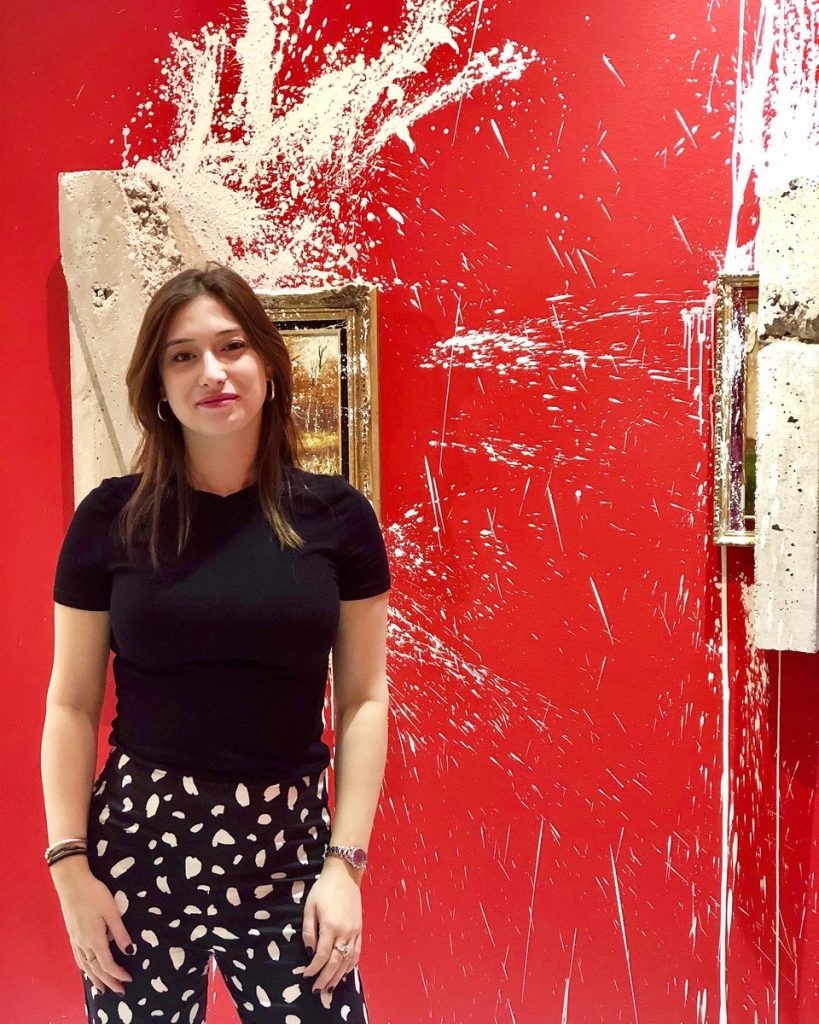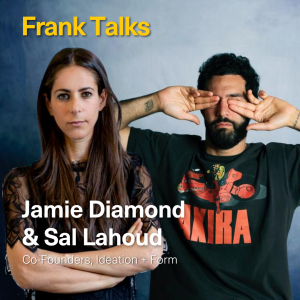This weekend we chat with Emily Shoyer, a specialist in modern and contemporary art, with a focus on art, memory and trauma through a decolonial and psychoanalytic lens. She currently works as a Research Associate at Venus Over Manhattan Art LLC., tele-fundraises for the Biden Victory Fund and writes for the Hungarian-born, Boston-based artist Zsuzsanna Varga Szegedi. She has held curatorial, research and project coordination roles at the Museum of Modern Art, the 9/11 Memorial & Museum, the Whitney Museum of American Art and the Jewish Museum. She holds an M.A. in Art History from the Institute of Fine Art at NYU and a B.A. in Art History from Barnard College, Columbia University and has been fortunate to publish and present her research in a global context. Happy weekend reading!
What was your first job in the Arts?
My first job in the art world was the summer before my senior year of high school when I worked as a gallery intern in Tribeca at Cheryl Hazan Fine Arts.
What was the most useful or important thing you learned at that job?
The internship at Cheryl Hazan Fine Arts was really illuminating as my first entry point into the New York art world. Working at a small Tribeca gallery focused on a broad range of contemporary artists taught me the importance of gallery representation, enabled me to grow as a writer and spend time in a client facing role working the front desk.
Tell us a little more about yourself. When did you realize you wanted to pursue a career in this industry?
My interest in art was sparked at an early age by my late paternal grandmother who decided to go back to college as an adult (having been dissuaded from attending university in her younger years due to her gender) and studied art history. Growing up in the greater Washington, D.C. area also provided me with many free opportunities to see art and I was always most intrigued by the subversive artwork I saw as asking important questions about our world. I felt frustrated in my history courses hearing the often-quoted phrase, “history is written by the victor.” To me visual art felt like a historical primary source giving us insight into the minds of people of the past who did not identify in many cases as victors. Once I realized you could exhibit and think about art as a career that was it for me!
What do you do now?
I am currently working as a Research Associate at Venus Over Manhattan on a publication project in addition to tele-fundraising for the Biden Victory Fund and conducting research and contributing texts for the Hungarian-born, Boston-based interdisciplinary artist Zsuzsanna Varga Szegedi.
Where are you from?
I grew up in Chevy Chase, Maryland just outside of Washington, D.C.
What is the arts community like there?
The arts community in DC has a really amazing legacy as the home of Washington Color School artists like Sam Gilliam and Morris Louis, and of course features the amazing constellation of the Smithsonian arts institutions in addition to some private exhibiting institutions such as the Phillips Collection and now Glenstone.
Has where you come from shaped what you do in the arts today?
Definitely! Growing up in DC gave me access to incredible art, and for free. That has shaped my desire to work primarily in the not for profit, public-facing sector of the art world.
What is the best piece of advice you can give about working in the art world?
I think the most important advice I could give to someone working in the art world is to absorb everything and work extremely hard in every internship and work experience you take on.
What is one of your greatest accomplishments in your career so far?
Publishing both my undergraduate and graduate art historical thesis research feels like a great accomplishment. Speaking at the “War, Art & Visual Culture Conference” in Sydney, Australia about the paintings that Obiora Udechukwu worked on during the Nigerian Civil War as well as publishing my MA thesis on the photography-based installation work of Owanto in the peer edited journal Postcolonial Interventions enabled me to publicize the important work of these artists and offer critical analysis on their projects to a larger audience.
What has been a challenge for you?
What feels like the greatest challenge in my career is actually what I am experiencing at the current moment. Until July 2020 I was working as a Project Coordinator at the Museum of Modern Art in New York City, which is truly my happy place, but due to the COVID-19 pandemic I was unable to find a future opportunity there. I feel so lucky to have meaningful part-time work in the art world at this time, but I do think the art world and in particular the non-profit sector of the art world is undergoing a major crisis and it is tough to know when it will fully recover.
What is something you do every day at the office (or your current home office)?
Something I make sure to do every morning even while working from home, is fill out my Five-Minute Journal. It’s a great reminder to find and express gratitude even when life feels difficult or slow.
What is one of the weirdest things you have had to do on the job in your career?
At MoMA, I had the amazing opportunity to work on “Redaction: A Project by Titus Kaphar and Reginald Dwayne Betts” at MoMA PS1. Titus included one of his incredible tar paintings which was a portrait of Dwayne Betts featuring a portion of the painting submerged in tar symbolizing the percentage of his life he had spent incarcerated. During the installation process Titus wanted to add some more tar to the bottom of the work, so I volunteered to go to Home Depot in Long Island City to try and find the very specific brand of tar we needed, which unfortunately they did not have. But I can’t say I had ever been in the tar section of Home Depot before!
What defines a good employee? What defines a good boss?
I think a good employee is a team player who always takes initiative in order to get things done and can take constructive criticism and apply it well. A good boss is validating, patient, attuned to the needs, accomplishments and struggles of their employees, and invested in their success and future.
What do you think makes a person hirable?
I think a person is hirable when they are enthusiastic, composed, experienced and self-aware.
What is your advice to making yourself stand out in your workplace? Any good tips for a giving a great interview?
A lot of interviews are simply employers looking to see if they want to be working with someone every day, so it is so important to be the best version of yourself in an interview. I think in order to stand out in your workplace you need to be friendly, but not inappropriate, attentive, productive and composed. If you can display all of those attributes and in addition, go above and beyond to do your job extremely well you will definitely stand out!
Is there any advice you would like to give people entering the art world?
My advice would be to try and obtain internships or work experiences in different sectors of the art world. I have learned so much about myself and what I value about art from working in auction houses, art fairs, small galleries, small and large museums.
Any other anecdotes about your working experience that you would like to share?
My first work experience in a museum was in the Visitor Services department at the Jewish Museum. I think anyone who is interested in museum work should start out in visitor services or another public facing role. It is so important to understand how difficult and rewarding frontline work at a public arts institution can be. Even when I was working in a more back of house, project coordinating and curatorial role at MoMA I volunteered to sit at the info desks to chat with and offer help to visitors. Having frontline experience enables me to stay attuned to audience needs and desires, and most importantly to maintain perspective.
What is the best exhibition you have seen in the last year?
That is a tough question! I am going to have to go with “30 Americans” which I saw this past November at the Barnes Foundation in Philadelphia. The exhibition travelled all around the country and the work was drawn from the Rubell Family Collection and focused on 30 influential and cutting-edge Black American artists and their interdisciplinary address of identity in multi-faceted ways. It was curated by the brilliant Gwendolyn DuBois Shaw.
If you could own a work by 5 different artists, who would be in your collection?
Only 5!! Oy, okay I am going to go with: Toyin Ojih Odutola, Obiora Udechukwu, Michael Armitage, Ruby Onyinyechi Amanze and Ghada Amer.
Have you seen any virtual exhibitions recently that you would like to comment on?
I really enjoyed the virtual edition of 1-54 Contemporary African Art Fair this past spring which would have been in New York. It is my favorite art fair to physically attend each year and was definitely different as a virtual edition, but I think also enabled me to spend more time researching and reflecting on some new work I had not seen before such as Kimathi Mafafo’s embroidered work and Prince Gyasi’s photography.
What artwork is in your home office?
My Grandma Lillian, the same grandmother who inspired my love of art history, purchased two really beautiful Sam Gilliam works on paper with my grandfather in the 1990s. I have one over my bed in my parents’ home, and the other right above my desk in my room in Brooklyn. Gilliam is one of my favorite artists and this work is a vibrant, three-dimensional encaustic and acrylic swirl of color featuring an amazing array of textures. It is truly a joy to look at every day as it reminds me of my roots in DC and my wonderful late grandparents.
How do you think art can play a fundamental role in the world’s recovery?
Recently at the virtual Democratic National Convention, Michelle Obama spoke about how under the current administration, and in general we are lacking empathy. Truly accomplishing empathy is a really difficult task as nobody can really walk in another person’s shoes. That being said, I think art is a really powerful tool enabling us to be affected by the most personal expression of another’s experiences. At this moment in time while we are isolated, alienated, and reckoning with the ways in which people’s experiences of the world differ based on various factors such as the color of their skin or socioeconomic background, looking at art by those who experience the world differently from us can help us to manifest some of the empathy that we are lacking and ideally inspire us to act, vote and work in a way that can fundamentally improve our world.
And finally, do you think the art world should be more transparent?
I think the art world MUST be more transparent. Right now, we are upholding white supremacy in the art world by requiring people to have connections to obtain work experiences and/or work for free. So much of the way the art world works is entirely ambiguous and requires insider access to understand, this also contributes to the majority white workforce within our industry. I think efforts like Art Frankly, grassroots efforts and fellowship programs within the art world to encourage mentorship and increase opportunity for emerging art professionals of color are great starts, but institutions both academic and public have a lot of work and reckoning to do on their own.




